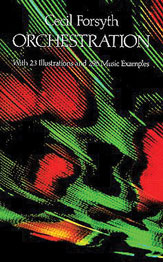Los Angeles Piano Shop & Irvine Music School
Category
-
Music Books
- ABRSM Piano Exam Books
- ABRSM Theory Exam Books
- Piano Lesson Books for Kids
- Piano Lesson Books Beginner
- Piano Lesson Books G1 to G5
- Piano Lesson Books G6 to G8
- Piano Lesson Books for Adult
- Theory Books For Kids
- Theory Books G1 to G5
- Theory books G6 to G8
- Piano Technique Books G1 to G8
- Piano Sight Reading Books G1 to G8
- Pop Piano Books
- Soft Music of Piano
- Baroque Piano Works
- Classical Piano Works
- Romantic Piano Works
- 20th Century Piano Works
- ABRSM Violin Exam Books
- Violin Books for Kids
- Violin Books G1 to G8
- Music Notebook
- Vocal Books for Kids
- ABRSM Vocal Exam Books
- Flute Books
- Piano Duets Books
- Viola Books
- Cello Books
- Double Bass Books
- Guitar Books
- Jazz Piano Course Books
- Clarinet Course Books
- Saxophone Course Books
- Trumpet Course Books
- Pop Songs Books
- Vocal Works
- Piano Works
- Drum Books
- Vocal Books for Teen
- Vocal Books for Adults
- Diploma Piano Books
- Diploma Vocal Books
- Ukulele Books
- Cajon books
- Choir Score
Related

|
With 23 Illustrations and 296 Music Examples
by Cecil Forsyth
Item: 06-243834
UPC: 9780486243832
ISBN 10: 0486243834
ISBN 13: 9780486243832
Series: Dover Edition
Category: Textbook - Instrumental
Format: Book
"For its time the most comprehensive treatment of the subject." — New Grove Dictionary of Music and MusiciansBefore the 17th century, composers seldom indicated in their music whether the composition was to be performed by a particular combination of voices or instruments. Then in 1607 Monteverdi made a well-known suggestion for the orchestration of his opera Orfeo. And as the Baroque era unfolded, the concept of orchestrations began to evolve, achieving a notable clarity and the acceptance of a keyboard instrument as an integral part of the ensemble.
Toward the middle of the 18th century, stylistic changes in instrumental music, e.g. styles that emphasized a single melodic line, directly affected methods of orchestration; while in the 19th century, orchestrations became an ever more vital factor in the composer's technique, a stylistic determinant that places a wealth of possibilities at his disposal. Finally, in the early 18th century, increasing awareness of the importance of internal balance, certain ideals of blended sound, and firmly established instrumental characteristics enabled orchestration to take its place as an academic discipline beside harmony and counterpoint.
In this classic manual, a noted English composer describes 57 orchestral instruments (ca. 1914) tracing their origins, development, and status at the beginning of World War I. Not only are the history and evolution of each instrument fully discussed, the author also explores the techniques of each instrument, as well as players' impressions about what they must play. The result is an unparalleled insight into the inner working of an orchestra — a vivid impression of what it is like to be a violinist, clarinetist, trombonist, or other orchestral player.While there have been numerous developments in instrumental technique on an individual basis since the book's first publication, most of what Forsyth says is still valid. Writing with wit, grace, and good sense, Forsyth created a formidably thorough, comprehensive, and informative text that has instructed and influenced generations of composers, conductors, musicians, and musicologists.
No comments.
|
|
- Service
- Trade in Pianos
- Move Pianos
- Corporate
- Tune Pianos
- Repair Pianos
- Member
- Career & Jobs
- Voucher & Discount
Friend Link:
Music-Education |
Shanghai-SingArts-Piano |
EEBO-Music |
Shanghai-Piano-Shop |
Nantong-Piano |
Singapore-Piano-Shop |
Los-Angeles-Used-Pianos |




